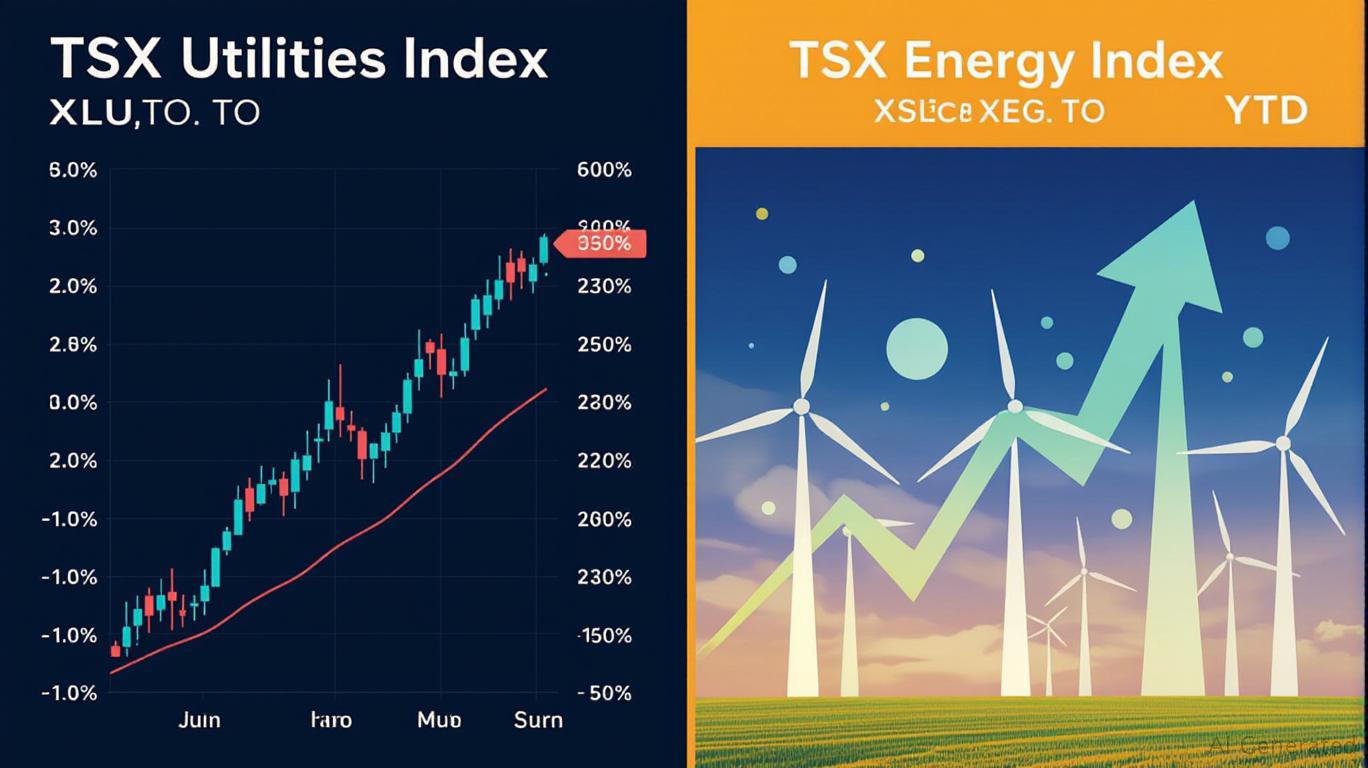TSX's Record High: Navigating Sector Divergence in a Shifting Economy
The Toronto Stock Exchange (TSX) has reached fresh highs amid a landscape of shifting macroeconomic forces, with sector rotation driving stark performance disparities. Telecom and Utilities stocks have emerged as defensive darlings, while Energy and Materials face headwinds from oil price volatility and trade uncertainties. This divergence offers both opportunities and risks for investors seeking to capitalize on Canada's economic resilience. Below, we dissect the drivers of this divide and outline strategies to navigate it.
Telecoms & Utilities: Defending Against Uncertainty
Telecom and Utilities sectors have led the TSX's recent gains, buoyed by trade optimism and their low-risk profiles. With U.S.-Canada trade tensions easing and tariff exemptions under the CUSMA agreement, these defensive sectors have attracted investors seeking stability.
Key Performers:
- Northland Power (NPI) (+3.4% YTD) and Boralex (BLX) (+3.8% YTD) have thrived in the renewable energy sub-sector, which analysts project to grow at 34% annually over the next five years.
- Emera (EMA), with its diversified utility portfolio, has returned 16.7% annually, benefiting from steady demand for energy infrastructure.

Why Now?
- Trade optimism: Reduced tariff risks have stabilized consumer and corporate spending.
- Low interest rates: The Bank of Canada's 225-basis-point rate cut since 2023 supports utility valuations, with the sector's PE ratio at 28.3x (vs. its 3-year average of 25.1x).
Energy & Materials: Stuck in a Price Squeeze
Energy and Materials stocks, once the TSX's backbone, have lagged due to oil price volatility and supply-demand imbalances.
- Oil Prices: Brent crude dropped to $60.48/barrel in May before rebounding to $78.42 by June, reflecting geopolitical tensions and oversupply fears. The International Energy Agency (IEA) projects global oil supply will outpace demand through 2030, with non-OPEC+ producers like Canada and the U.S. leading growth.
- Trade Risks: China's slowing demand and U.S. steel tariffs have dampened Materials sector optimism.
Underperformers:
- TransAlta (TA) and Algonquin Power & Utilities (AQN) declined 4.5-4.8% YTD due to project delays and regulatory hurdles.
Macroeconomic Resilience: Canada's Dual-Track Economy
While Telecom/Utilities and renewables are thriving, provincial disparities highlight Canada's economic complexity:
- Alberta/Saskatchewan: Energy-driven growth (2.4%/2.2%) faces headwinds from wildfire disruptions and delayed projects like Dow's $11.6B petrochemical plant.
- Ontario/Quebec: Lagging at 1.3% growth due to manufacturing job losses (e.g., auto sector), though fiscal stimulus is mitigating the blow.
The TSX's record high reflects a bifurcated reality: defensive sectors and tech/AI stocks are powering gains, while traditional commodity-linked sectors struggle.
Investment Strategies: Capitalize on Divergence
1. Rotate into Utilities & Renewables:
- Buy: Northland Power (NPI) and Boralex (BLX) for exposure to renewables.
- ETF: Consider the iShares Global Clean Energy ETF (ICLN) for diversified exposure.
2. Hedge Energy Exposure:
- Short-term plays: Use Put options on oil ETFs (USO) to capitalize on price dips.
- Long-term: Focus on Canadian Natural Resources (CNQ) or Suncor (SU) for stability in oil infrastructure.
3. Avoid Telecom Overvaluation:
- Telecom stocks like Telus (T.TO) and BCE (BCE.TO) face downward price targets due to pricing wars (e.g., Quebecor's Freedom Mobile). Wait for corrections or pivot to Quebecor (QBR-B.TO) for aggressive growth.
Risks to Watch
- Trade Reversals: A sudden escalation in U.S.-China or U.S.-Canada trade disputes could reverse sector momentum.
- Oil Supply Shocks: Iran's production ramp-up or geopolitical flare-ups could destabilize prices.
- Rate Hikes: A Federal Reserve policy shift could pressure high-PE sectors like Utilities.
Conclusion: Sector Divergence Demands Disciplined Focus
The TSX's record high masks underlying volatility, with Telecom/Utilities and Energy/Materials charting divergent paths. Investors should prioritize defensive sectors for stability, cautiously explore energy through hedged positions, and avoid overpaying for telecom stocks. As Canada's economy balances trade optimism and commodity risks, staying agile—while anchoring portfolios in resilient sectors—will be key to sustained gains.
Final Note: Monitor oil prices and trade policy updates closely, as these will dictate sector rotations in the coming months.
Sign up for free to continue reading
By continuing, I agree to the
Market Data Terms of Service and Privacy Statement

Comments
No comments yet